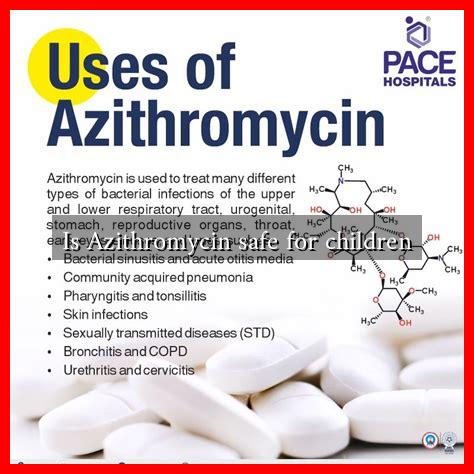-
Table of Contents
Is Azithromycin Safe for Children?
Azithromycin, a macrolide antibiotic, is commonly prescribed to treat various bacterial infections in both adults and children. Its effectiveness against respiratory infections, skin infections, and certain sexually transmitted diseases has made it a popular choice among healthcare providers. However, concerns about its safety and potential side effects in children have led many parents to question whether it is a suitable option for their little ones. This article delves into the safety of azithromycin for children, examining its uses, potential risks, and guidelines for administration.
Understanding Azithromycin
Azithromycin works by inhibiting bacterial protein synthesis, effectively stopping the growth of bacteria. It is often prescribed for:
- Respiratory tract infections (e.g., pneumonia, bronchitis)
- Ear infections (otitis media)
- Skin infections
- Strep throat
- Certain sexually transmitted infections
Due to its broad spectrum of activity and relatively convenient dosing schedule (often just once daily), azithromycin has become a go-to antibiotic in pediatric medicine.
Safety Profile of Azithromycin in Children
When considering the safety of azithromycin for children, several factors come into play, including age, dosage, and the specific condition being treated. Research indicates that azithromycin is generally safe for children when prescribed appropriately. However, there are some important considerations:
- Age Restrictions: Azithromycin is approved for use in children as young as six months old. However, the dosage must be carefully calculated based on the child’s weight.
- Potential Side Effects: Common side effects include gastrointestinal issues such as nausea, vomiting, and diarrhea. In rare cases, it can lead to more severe reactions, including allergic reactions and liver problems.
- Cardiac Risks: There have been reports linking azithromycin to an increased risk of heart rhythm abnormalities, particularly in children with pre-existing heart conditions. A study published in the journal NEJM highlighted this concern, emphasizing the need for caution in prescribing azithromycin to children with cardiac issues.
Case Studies and Statistics
Several studies have examined the safety and efficacy of azithromycin in pediatric populations. For instance, a study published in the Pediatrics journal found that azithromycin was effective in treating community-acquired pneumonia in children, with a low incidence of adverse effects. The study reported:
- Over 90% of children showed improvement within 48 hours of starting treatment.
- Less than 5% experienced significant side effects.
Another case study involving children with cystic fibrosis indicated that azithromycin could improve lung function and reduce the frequency of pulmonary exacerbations, further supporting its use in specific pediatric populations.
Guidelines for Administration
To ensure the safe use of azithromycin in children, healthcare providers should adhere to the following guidelines:
- Conduct a thorough medical history to identify any pre-existing conditions, especially cardiac issues.
- Calculate the appropriate dosage based on the child’s weight and age.
- Monitor for any adverse reactions during treatment, particularly gastrointestinal symptoms.
- Educate parents about the signs of allergic reactions and when to seek immediate medical attention.
Conclusion
In summary, azithromycin is generally considered safe for children when prescribed appropriately and monitored closely. While it is effective in treating various bacterial infections, healthcare providers must weigh the benefits against potential risks, particularly in children with underlying health conditions. Parents should remain informed and vigilant, ensuring that their children receive the best possible care. As always, consulting with a healthcare professional is crucial before starting any medication.
For more information on the safe use of antibiotics in children, you can visit the CDC’s Antibiotic Use in Children page.




